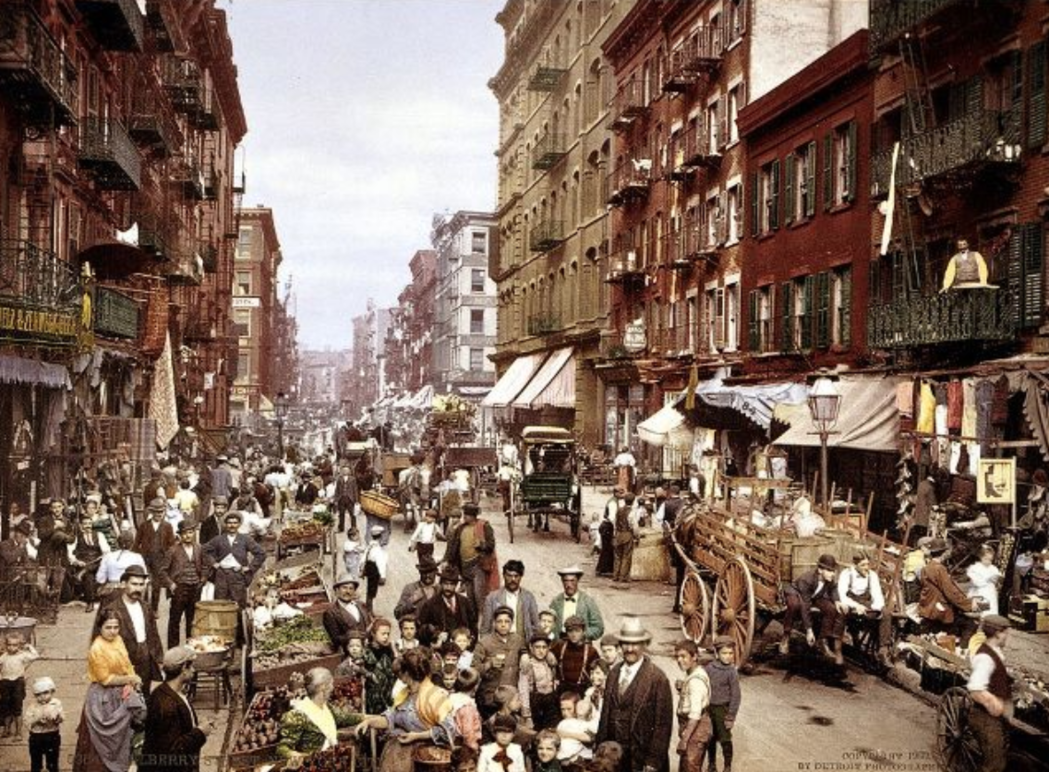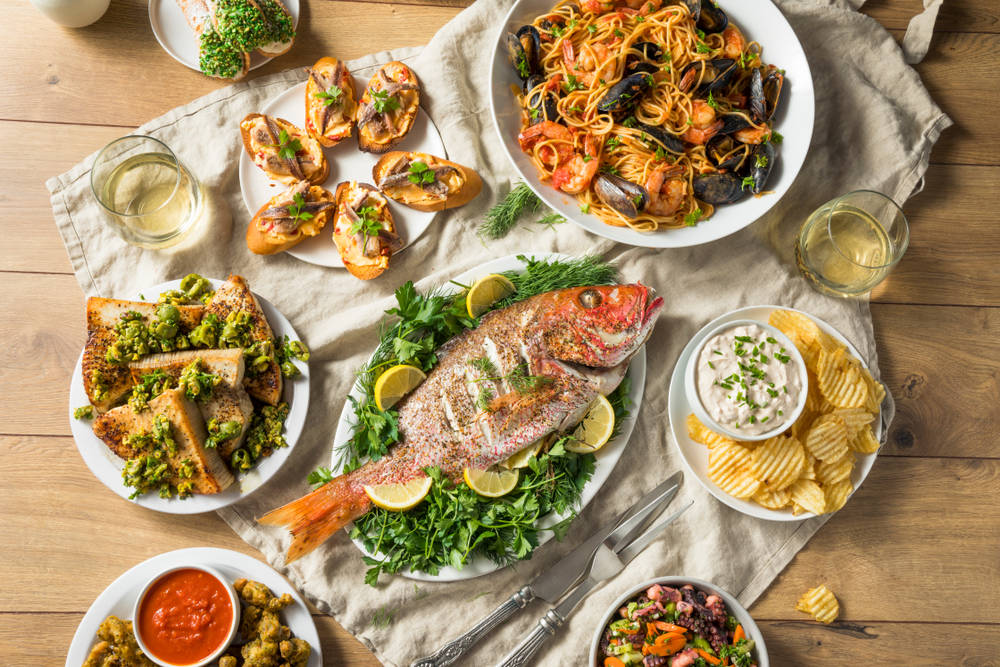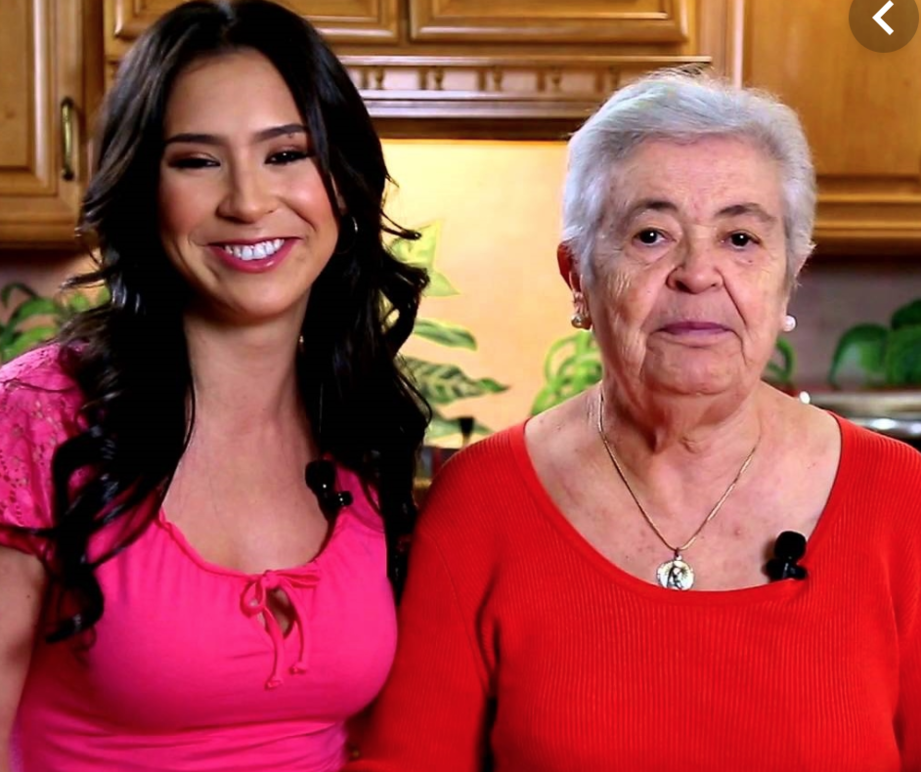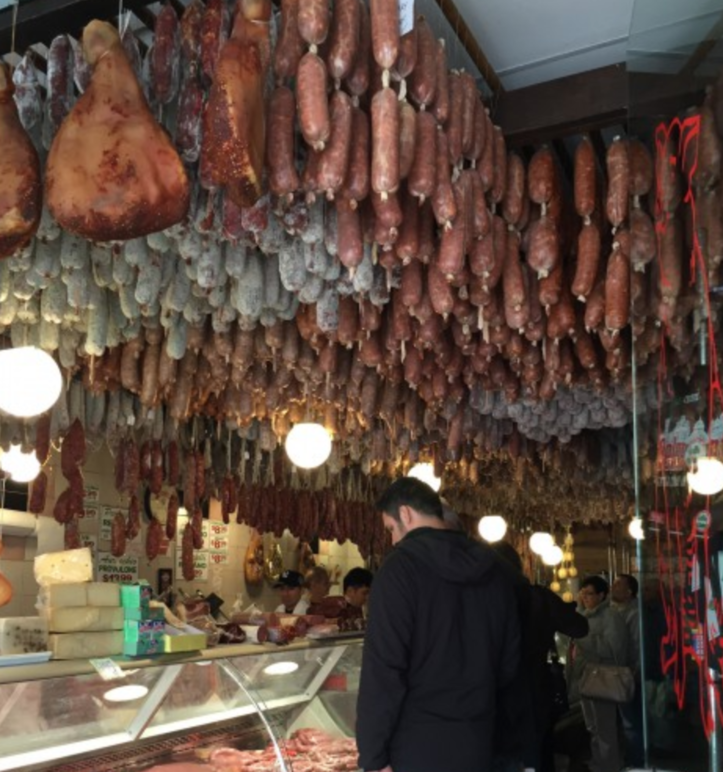What's Behind a Plate of Meatballs
I wasn’t able to get through the whole thing. Others probably won’t feel the same way. Especially in Italy. All things considered, New York - and anything concerning it - still draws attention. But the 25 years I’ve spent in the United States push back, they ask for justice, they take offence.
I’m talking about that Italian TV program where a restaurateur turned TV host, professes himself the ‘guru of Italian taste’ and thus of Italian culinary culture.
The format is by no means innovative. It’s one of those competitions that nowadays are insistantly being presented to audiences. The official scope is to assign the title of best Italian restaurant outside of Italy. The true scope however, seems to be to simply follow the trend of communicating by shouting, provoking, using social media, without expending too much energy. Just open Youtube and you can see the vulgarities thrown at contestant Rossella Rago for bringing attention to an Italian American dish.
That’s the format. Three locally-based contestant-judges compete in each episode bringing the host to their favorite restaurant. They eat, comment, and vote on the dishes.
The episode I want to discuss is the first one (but I imagine it won’t be the last) shot in New York. Outside Manhattan, making it impossible to avoid discussing the subject of Italian American cuisine. I mean discussing it without using it for self-interest, as happens in the program.
Right from the start, the host’s superior, condescending, yet highly unprofessional and therefore unconvincing tone doesn’t sound very promising. He isn’t exactly friendly. And certainly not authoritative.
The restaurateur and self-proclaimed guru tries and fails to somewhat mimic the attitude of Masterchef chefs. He is the spokesperson and representative of the dishes’ authenticity, of Italianness. He does it assuming uninspired airs of superiority.
So everything revolves around ranking the italianness of the restaurants but also of the judges. A ranking of what the host-guru has decided qualifies as real Italian cuisine. “Parmigiana, a classic. But you can’t put eggplant on a plate next to pasta!” “You chose chicken marsala as your favorite dish?” he scolds Rossella Rago, a young Italian American. “I chose it because it tells the Italian American story,” she answers whole-hartedly.
It’s certainly wrong to blame the host. There clearly are a lot of problems behind the show’s writing if the questions asked to determine if someone is a real Italian are: “Who hosts the program Amici? You don’t know? She’s a very famous Italian star! So you’re not Italian enough!” The general tone is therefore contemptuous and, in a way, racist. It’s superficial to say the least, but really I should say it's ignorant.
I know, not everyone has lived in New York for 25 years, not everyone has had a long-standing collaboration with the John D Calandra Italian American Institute. I have had the chance to approach Italian American culture, even from the inside. For this I have to thank the Dean, Anthony Tamburri, the popular traditions scholar Joseph Sciorra, and many more. I still have a lot to learn. It takes humility to enter a world that isn’t our own. I have often been surprised and enriched by it.
The Italian diaspora is a delicate subject, it has to do with identity and a complex relationship with one’s roots, which many have had to hide in the name of a sort of forced integration. The cuisine often carried the subconcious desire to remain tied to those roots. I believe it would therefore be appropriate for TV stations who let their writers tackle delicate topics to try and seek out consultations, if not study the subjects themselves.
There exists an ethic of communication, even though I realize that television has long-since blurred the line between honest information and spectacle. These remain delicate topics. They’re not just about a plate of fettucine Alfredo, they speak to all of Italian culture outside of Italy. Indirectly, I would say, to all cultures.
The image of Italy abroad has now become schizophrenic. Often manipulated, misunderstood, filled with stereotypes. Whether we are talking about today’s so-called expats, about Italian Americans from many generations back, about young people of Italian origin, now American.
This isn’t the article that debates and explains the history, the value of American cuisine, and it isn’t the one that looks for differences from what would today be considered haute Italian cuisine. It isn’t where you have to pick a side, as if you were choosing between two football teams.
The Italian American culinary tradition - studied in depth by American and Italian scholars alike - shouldn’t be the only one asking for justice. Italian popular cooking traditions, which are undeniably the source of Italian American cuisine, should also be asking for justice. It was an extremely poor cuisine, since authentic Italian ingredients were not available in America. It was the cuisine of the women of the time, who often only spoke dialects and who adapted to a new world. They had to feed the family, trying to recall the dishes of home, as they ate together, perhaps in a basement. It certainly was filled with italianness, that sense of belonging that many in Italy no longer understand. An italianness that reached and continues to reach its peak on Christmas, which is richly celebrated, with 7 fishes. A rite which surprises many Italians.
And I remember fondly the sparkle in my Sicilian mother’s eyes. She stopped, deeply moved, in front of a window display in Boston during a trip to visit me. In a pastry shop, she recognized sweets packaged in the very same way as they were in Caltanisetta when she was a child…
Italian American cuisine, born of memory and adaptation to local cuisine, then went its own way, a more than dignified way.
From this side of the Atlantic, after having worked for years as a journalist on the concept of cultural mediation and having recently founded a new communication agency (Your Italian Hub) which takes cultural mediation as its key focus, I will try to conclude with a couple of personal reflections.
The paternalistic and auto-referential tone of this program is perhaps the key to figuring out where and how it goes wrong. It’s a mistake that anyone can make. Not just Italians, but anyone who hides behind certainties without studying. The world changes constantly, young people can’t even touch the present, not to mention the past! The answer to such a program is in my opinion an open approach, which looks at the reasons for others’ mistakes. Such an episode can be much more than an ‘attack’ on Italian American cuisine.
It’s a reflection that has to be done carefully, a sort of cultural exchange that brings the two different Italies to meet and understand each other.
And I leave you with two considerations.
One taken from an article on La Voce di New York by the very Italian Director of Casa Italiana Zerilli-Marimò (NYU) Stefano Albertini, who writes:
“The devious idea that the program seems to be sending is that Italians who emigrate become in a way less Italian, second-rate Italians to whom ‘real’ Italians have to constantly teach what it means to be Italian, starting with eliminating spaghetti with meatballs. And I purposefully eat them, and I enjoy them, because other emigrating Italians, like me and before me, conbined the base element of their diet with meat that here in America they could find at accessible prices. Paisà, don’t worry: we are just as Italian as those fancy people who eat salt-crusted branzino.”
And one from an interview I had with Mauro Porcini, Chief Design Officer of PepsiCo, also extremely Italian. I had asked him about the mistakes that according to him Italians usually make when approaching American culture:
“We live in very complex times, we have to learn to dialog with other realities. We have to understand that we don’t have something that others lack, something that’s necessarily better. We need less arrogance and more respect.”
Because starting from a plate of meatballs, you can talk about much more…
This article is written by someone who is well-aware of what ‘Made in Italy’ is and how important it is to introduce and explain it to people around the world. But I would never think that Italian American, or any other type of cuisine, could pollute. Pollute what?







































Comments
Who’s behind a plate of meatballs